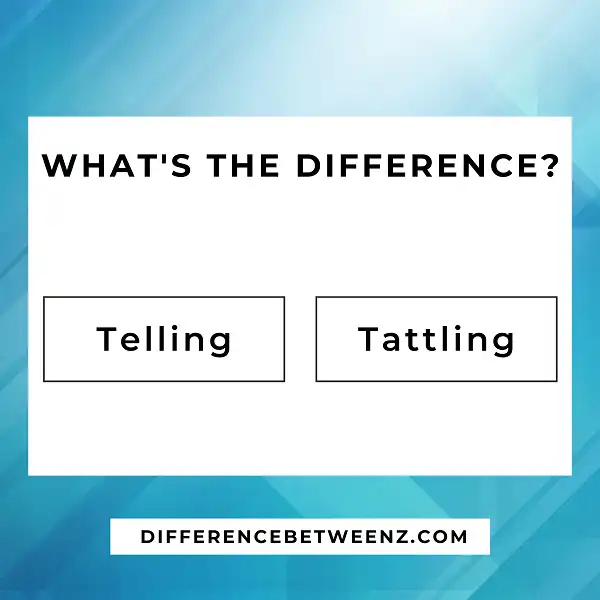When is it appropriate to tell someone and when is it appropriate to tattletale? There seems to be a lot of confusion on this topic, but the difference is actually quite simple. Telling someone is an act of communication, while tattling is an act of betrayal. When you tell someone, you are sharing information with them because you want to help them or improve the situation. Tattling, on the other hand, involves sharing information with others in order to get them in trouble or make them look bad. If you can remember the difference between telling and tattling, you’ll be able to handle tricky situations more confidently and effectively.
What is Telling?
Telling is the practice of exchanging information between people. It can be done verbally, through written communication, or non-verbally. Telling is a fundamental part of communication and helps to ensure that messages are accurately conveyed. When telling is done effectively, it can help to build rapport, trust, and understanding between people. Telling also allows people to share ideas, feelings, and experiences with one another. In some cases, telling may be used interchangeably with other forms of communication, such as listening or asking questions. However, it is important to remember that each form of communication has its own unique purpose and benefits. Telling is just one tool that can be used to facilitate effective communication.
What is Tattling?
Tattling is the act of telling on someone else, usually to get them in trouble. It’s often seen as a negative thing, but there are times when tattling can be helpful. For example, if someone is breaking a rule or doing something unsafe, Tattling can help to prevent accidents or injuries. Tattling can also be a way to stand up for yourself or others if you’re being bullied or harassed. In those cases, Tattling can be a form of self-protection. Of course, there are also times when Tattling is simply done out of spite or to get someone in trouble for no good reason. That’s not beneficial for anyone and can just create unnecessary conflict. So it’s important to use Tattling wisely and only do it when it’s truly warranted.
Difference between Telling and Tattling
Telling and tattling are two terms that are often used interchangeably, but there is actually a big difference between the two. Telling is when you share information that is important or helpful, while tattling is when you share information that is not important or helpful. Telling can be useful in many situations, such as when you see someone in danger or when you witness a crime. Tattling, on the other hand, is often motivated by a desire to get someone in trouble. It can also be motivated by jealousy or a need for attention. In general, telling is positive and tattling is negative. However, there are exceptions to this rule; sometimes, tattling can be helpful if it leads to a positive outcome, such as stopping a bully from harassing other kids. Ultimately, it’s important to use your best judgment to decide whether something is worth sharing or not.
Conclusion
Telling and tattling are two different things, with very different results. It’s important for parents to be able to distinguish between the two in order to help their children learn the appropriate way to communicate their concerns. We hope this article has helped clarify the difference between telling and tattling for you.


